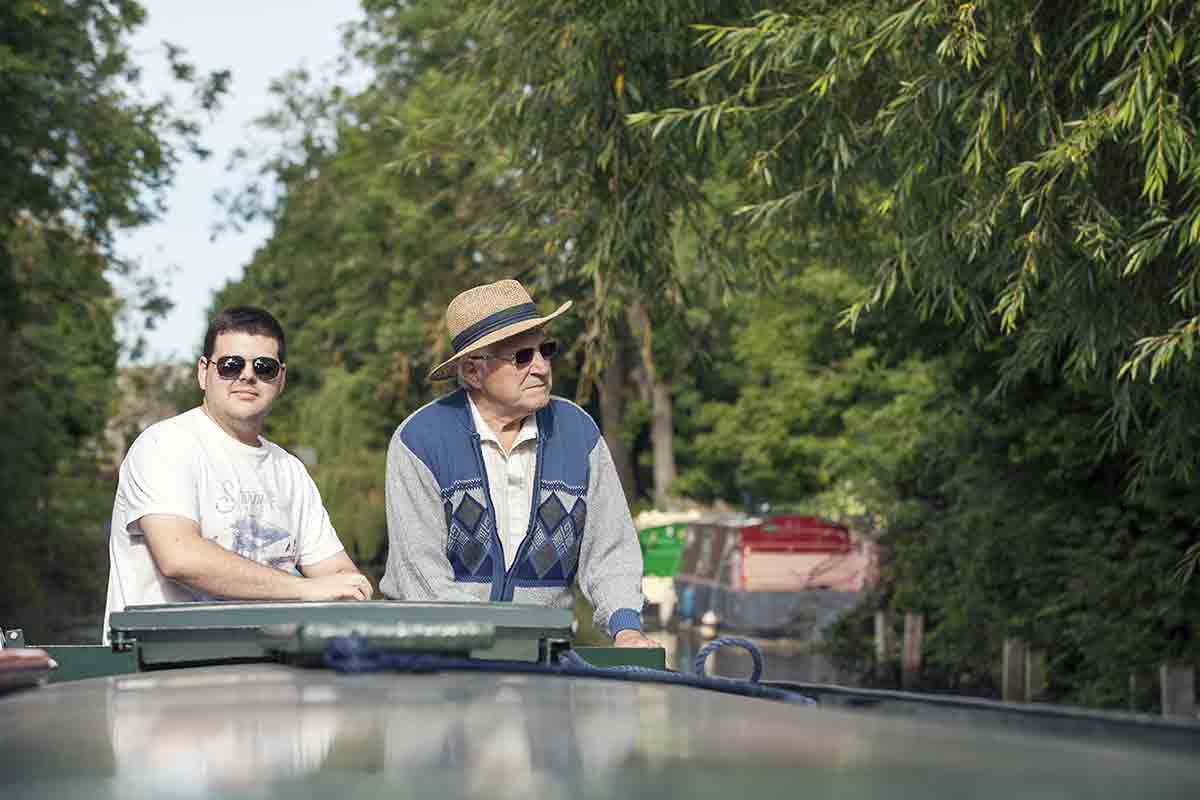
First time canal boat – Fox Narrowboat Fens
Have you ever been sailing?
Had a go on a motor cruiser?
Or are you mystified by nautical terms and the thought of complicated knots and navigating knowledge?
If you’ve already been sailing, or have some experience with a GRP motor cruiser, you may be wondering how different a canal boat can be. A narrowboat holiday can leave you feeling refreshed and re-energised. Even with no previous experience of boating our customers discover it’s easy to master a canal boat.
Setting Off
A narrowboat pivots somewhere near its middle; meaning when the bow goes left the stern goes to the right and vice versa. So when setting off from the bank it’s easiest if one of your crew pushes the bow out from the bank, and then walks back along the towpath to join the helmsman on the back deck. The boat is now pointed towards the centre of the canal and you can set off.
Steering
The first rule of canal boating is that boaters drive on the right. The second rule of canal boating is that we don’t call it “driving” but instead we say “steering!”
Even an experienced boater can find that the amount of control you have over the boat is directly linked to the number of spectators around! If nobody is watching you will have perfect control, and yet, mysteriously, if lots of people are watching you the boat can seem to have a mind of its own! (Fun fact: the word for a person who enjoys watching boats going by is a “gongoozler!”)
Tiller steering is different to wheel steering, but once you get the hang of it you will find a tiller easier to use. Push the tiller to the right to steer left, and to the left to steer right. You can’t steer at all when the boat is in neutral. Cruising forwards is fine, but there is a lot less control over the direction of the boat when the engine is in reverse.
Stopping the boat takes a lot longer than you might expect. To stop you will have to put the boat into reverse, but don’t expect it to stop any time soon. Steel narrowboats have a lot of momentum, so when you want to stop you’ll have to plan ahead. Everything happens much more slowly than it would with a light GRP cruiser, so although you may be aware that you are going to crash in five seconds time, you may not be able to avoid it if you haven’t put the engine into reverse in time!
It can also be trickier to steer on a windy day, as the wind may take the boat drifting across the navigation, but many of our local waterways are quite wide.
However, don’t let any of this put you off. You will be given full training before setting off from our hire boat base, and first time boaters generally enjoy their holidays without any mishaps or difficulty, taking to it like a duck to water.
Mooring Up
On the inland waterways stern and bow lines are only used for mooring. To moor up, slow the boat right down to tickover and gently steer towards the bank at a shallow angle. Gently putting the boat in reverse will bring it to a stop. Step off the boat holding the centre line (mooring rope). Official moorings will have mooring rings or bollards; but at a rural mooring you will need to use mooring pins.
Working the Locks
Before setting off our instructor will give you some basic training in boat handling and explain how to operate a lock. You will need an L-shaped tool called a windlass, (provided with the boat,) to open the paddles on the lock gates, which will either fill or empty the lock, depending on which direction you are travelling in. If you’re completely new to narrowboating ideally you may like one or two people to operate the lock, plus somebody to steer the boat. You will need to temporarily moor the boat to the bollards provided at the lock landing, while you set the lock, ready for your boat to go through.
Read: How to Work a Lock (Even if You’ve Never Done it) for a more detailed explanation, including our top safety tips.
Smaller locks are operated by you and your crew, and some larger tidal locks are operated by lock keepers.
“Lovely day on the waterways of Fenland, took a leisurely trip to Benwick from March.
Youngsters were left speechless with seeing Kingfishers, fish, heron and dragonflies.
Gavin’s instructional tutorial was easy to follow, and we soon chugged down the River Nene. Thanks to Paula and the team for a memorable day!” – Niki D. (Tripadvisor).
If you enjoyed reading these boating tips sign up for updates from this blog. (We never share or sell email addresses – your details are safe with us.) Just look for ‘Follow Blog’ in the sidebar on the right and we’ll send you stories, tips and advice about narrowboating around the Fens.
Image Credit: Fox Narrowboats